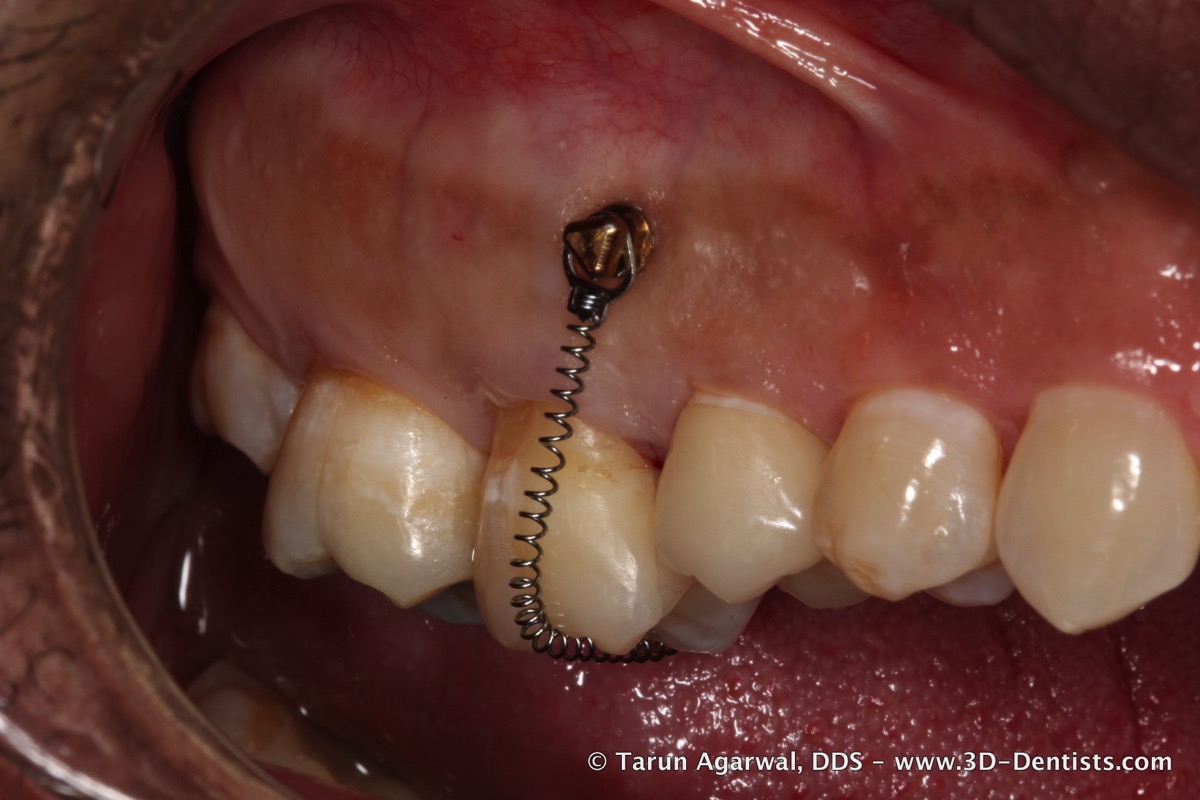

Can TADs be used for patients at any age? TADs are versatile and may be used in different areas of the mouth during different parts of treatment. It may be required only for a few months, or it may be needed throughout your orthodontic treatment. Your orthodontist will advise you about how long a TAD will be needed. Some orthodontists may choose to have a TAD placed by another dental specialist. This ensures the TAD is placed exactly where the orthodontist wants it. Who places the TAD?īecause orthodontists have the training and expertise to place them, many orthodontists place TADs themselves. If the TAD does become loose or come out, call your orthodontist as soon as possible. Because of the possibility that TADs can loosen or fall out, patients should avoid picking or pulling at the TAD. Once placed, the orthodontist is able to use the TAD as orthodontic anchorage immediately. There is little or no discomfort because there are no nerve endings in the bone tissue. Placement is minimally invasive and often completed using only topical anesthetic.TADs are inserted directly into the bone using a special instrument. TADs are placed in the bone between the roots of the teeth and can be placed in the bone in the roof of the mouth as well. TADs can also provide a point of anchorage for patients with missing teeth. TADs allow orthodontists to overcome limitations of holding arches and headgear and perform difficult tooth movements predictably. Orthodontists often use holding arches, also known as space maintainers, and headgear to control anchorage and minimize the movement of certain teeth while carrying out the desired movement of other teeth. These alloys are not rejected by the body. Titanium alloys have been used as joint replacements and for dental implants for many years. They are fixed to bone temporarily to enhance orthodontic anchorage. Temporary Anchorage Devices (TADs) are considered the most significant innovation in orthodontics of the last 25 years.

TADs are titanium-alloy mini-screws, ranging from 6 to 12 millimeters in length and 1.2 to 2 millimeters in diameter. Digital services for the orthodontic professional. What are TADs (temporary anchorage devices)? Although small, the TAD does a big job of helping your orthodontist move your teeth predictably into their optimal positions. Caring for your TAD generally requires only routine brushing. There is little or no discomfort when a TAD is placed. TADs may contribute to predictable results, shorter treatment time and completion of active treatment on schedule. Placement is customized for each patient. They can be placed in many different sites in the mouth. TADs provide a fixed point from which to apply force to move teeth. They are changing the way orthodontists treat some patients’ malocclusions. Temporary anchorage devices (TADs) for orthodontic anchorage are widely accepted. Allow for “extreme” tooth movement(in difficult case).Close Spaces where teeth are missing)avoiding the need for tooth placement).Masri without the need of Jaw Surgery The Use of TAD’s We will be able to answer any of your questions and provide you with detailed information about your orthodontic treatment.Open bite case treated by Dr. If you have questions about TADs, please contact our practice. When your TAD is placed, we will also provide you with an antimicrobial mouthwash that you will need to use twice a day. How can I keep my TAD clean?Ī TAD can be cleaned the same way you clean your braces: by brushing your teeth at least three times a day. If you continue to experience discomfort days after your treatment, please contact your dentist as soon as possible. If you do feel any discomfort from having your TADs placed, Tylenol® is recommended to help relieve your pain. What can I do to relieve discomfort caused by my TAD? Removal of a TAD is a comfortable procedure that takes just a few minutes. Your TAD is removed once your treatment is complete, or when it is no longer needed to help straighten your teeth. While your doctor is placing the TAD, you may feel slight pressure, but within a day, you will no longer be able to feel the TAD. The placing of a TAD is quick, and may be over before you know it. Once the area is numb, your doctor will gently place the TAD through the gum tissue and firmly into the jawbone. How are TADs placed?Ī strong anesthetic is used to numb the gum tissue and the jaw surrounding the area where the TAD will be placed. TADs may be used in addition to braces or as an alternative to headgear. Temporary anchorage devices, or TADs, are small titanium anchors used in certain orthodontic cases to help achieve quicker tooth movement with more efficiency and comfort.


 0 kommentar(er)
0 kommentar(er)
